In the age of digital transformation, the ability to decipher, comprehend, and respond to human language has become a critical facet of Artificial Intelligence. Natural Language Processing (NLP), a subfield of AI, has been at the forefront of this revolution, reshaping the way we interact with machines and opening up a world of possibilities for automated understanding and communication.
In the realm of Artificial Intelligence (AI), Natural Language Processing (NLP) has emerged as a transformative technology, enabling machines to understand, interpret, and generate human language.
More than 80% of all digital data was unstructured text, a staggering volume of information ranging from emails, social media posts, news articles, and research papers. NLP, armed with its statistical and machine learning techniques, has been instrumental in making sense of this vast sea of data.
So, lets come along and see what this NLP(natural language processing) has to offer us.
What is natural language processing?
Natural Language Processing (NLP) is a subfield of artificial intelligence (AI) that focuses on enabling computers and machines to understand, interpret, and generate human language in a way that is both meaningful and useful. Essentially, NLP bridges the gap between the natural language that humans speak and understand and the structured data that computers can process.
NLP systems are designed to interact with, analyze, and generate text or speech, allowing machines to comprehend and work with human language, whether it’s written or spoken. This capability has far-reaching implications across various industries, from improving customer service with chatbots to making language translation more accurate and efficient.
Key Concepts and Components
Explore the fundamental concepts and key components of NLP, including tokenization, syntactic analysis, semantic analysis, and more.
- Tokenization: The process of breaking down a text into individual words or tokens, making it easier for the machine to analyze.
- Syntactic Analysis: Parsing the text to understand the grammatical structure and relationships between words, such as identifying subjects, verbs, and objects.
- Semantic Analysis: Going beyond grammar, this aspect involves understanding the meaning of words and phrases in context.
- Named Entity Recognition (NER): Identifying and classifying entities within the text, such as names of people, organizations, locations, dates, and more.
- Sentiment Analysis: Determining the emotional tone or sentiment expressed in a piece of text, whether it’s positive, negative, or neutral.
- Machine Translation: Translating text from one language to another, such as Google Translate.
- Text Summarization: Generating concise summaries of longer text, often used in news articles and document summarization.
- Speech Recognition: Converting spoken language into text, as seen in voice assistants like Siri and Alexa.
- Language Generation: Creating human-like text or speech based on a given input, used in chatbots and content generation.
NLP technologies rely on large datasets and machine learning techniques, including deep learning, to train models that can perform these tasks effectively. Moreover, many NLP systems employ pretrained models, such as BERT and GPT, which have been trained on vast amounts of text and can be fine-tuned for specific NLP applications.
How NLP works?
NLP works by breaking down human language into smaller components, such as words, phrases, and sentences. It then uses a variety of techniques to analyze these components and understand their meaning.
One important technique is part-of-speech tagging. This involves identifying the part of speech of each word in a sentence, such as noun, verb, adjective, or adverb. This helps the computer to understand the grammatical structure of the sentence.
Another important technique is semantic analysis. This involves understanding the meaning of words and phrases in context. For example, the word “bank” can refer to a financial institution or to the side of a river. Semantic analysis helps the computer to determine which meaning is intended in a particular sentence.
NLP also uses machine learning to train computers to perform specific tasks, such as machine translation or sentiment analysis. Machine learning algorithms are trained on large datasets of text and code, which allows them to learn the patterns and rules of human language.
Important Natural Language Processing (NLP) Models
Most important natural language processing (NLP) models include:
- Word2Vec: Word2Vec is a neural network model that learns to represent words as vectors of numbers. These vectors capture the semantic and syntactic relationships between words. Word2Vec is used in a wide range of NLP tasks, such as machine translation, text summarization, and sentiment analysis.
- GloVe: GloVe is another neural network model that learns to represent words as vectors. GloVe is similar to Word2Vec, but it uses a different training algorithm. GloVe is also used in a wide range of NLP tasks.
- BERT (Bidirectional Encoder Representations from Transformers): BERT is a deep learning model that learns to represent sentences as vectors of numbers. BERT is trained on a massive dataset of text and code, and it can be used to perform a variety of NLP tasks, such as question answering, machine translation, and natural language inference.
- GPT-3 (Generative Pre-trained Transformer): GPT-3 is a large language model that can generate text, translate languages, write different kinds of creative content, and answer your questions in an informative way. GPT-3 is trained on a massive dataset of text and code, and it is one of the most powerful NLP models ever created.
- LaMDA: LaMDA is a factual language model from Google AI, trained on a massive dataset of text and code. LaMDA can generate different creative text formats of text content, like poems, code, scripts, musical pieces, email, letters, etc. It will try its best to fulfill all your requirements.
- Megatron-Turing NLG: Megatron-Turing NLG is a large language model developed by Google AI. It is trained on a massive dataset of text and code, and it can generate text, translate languages, and answer your questions in an informative way. Megatron-Turing NLG is still under development, but it has the potential to be used in a wide range of applications, such as chatbots, virtual assistants, and search engines.
- Wu Dao 2.0: Wu Dao 2.0 is a large language model developed by the Beijing Academy of Artificial Intelligence (BAAI). It is trained on a massive dataset of text and code, and it can generate text, translate languages, and answer your questions in an informative way. Wu Dao 2.0 is still under development, but it has the potential to be used in a wide range of applications, such as chatbots, virtual assistants, and search engines.
- GPT-4: GPT-4 is a large language model developed by OpenAI. It is the successor to GPT-3, and it is one of the most powerful NLP models ever created. GPT-4 can generate text, translate languages, write different kinds of creative content, and answer your questions in an informative way. It is still under development, but it has already been used to create a number of impressive applications, such as ChatGPT.
These are just a few of the many important NLP models that have been developed in recent years. NLP is a rapidly developing field, and new and improved models are being developed all the time.
How these NLP models are being used in the real world?
- Word2Vec and GloVe are used by Google Search to improve the accuracy of its search results.
- BERT is used by Amazon Alexa to understand natural language requests and respond in a helpful way.
- GPT-3 is used by OpenAI to develop new and innovative AI applications, such as the DALL-E 2 image generation model.
- LaMDA is used by Google Search to improve the quality of its search results and to generate new and informative content.
NLP models are playing an increasingly important role in our lives, and they are likely to become even more important in the future. As NLP models become more sophisticated and powerful, we can expect to see them used in new and innovative ways to improve our lives.
Examples of NLP in use
- Machine translation: NLP is used to translate text from one language to another. For example, Google Translate uses NLP to translate text from over 100 languages.
- Text summarization: NLP is used to summarize long pieces of text into shorter, more concise versions. This can be useful for tasks such as summarizing news articles or scientific papers.
- Sentiment analysis: NLP is used to identify the sentiment of a piece of text, such as whether it is positive, negative, or neutral. This can be used for tasks such as tracking customer satisfaction or identifying social media trends.
- Question answering: NLP is used to develop systems that can answer questions posed in natural language. For example, Google Search uses NLP to answer billions of questions every day.
- Chatbots: NLP is used to develop chatbots that can interact with humans in a natural way. Chatbots are used in a variety of industries, such as customer service, healthcare, and education.
The Future of NLP in AI
NLP is a rapidly developing field, and there is a lot of excitement about its potential in the field of artificial intelligence. The future of Natural Language Processing (NLP) in AI is undeniably bright and filled with promise, poised to reshape the way we interact with technology and the world around us. As NLP systems become more sophisticated, they will be able to perform more complex tasks and understand human language at a deeper level.
This is likely to lead to the development of new and innovative applications for NLP, such as personal assistants that can understand our natural language requests and complete tasks on our behalf. It’s also possible that NLP will eventually be used to develop artificial intelligence systems that can understand and communicate with humans in a truly natural way.
The post Unlock the Power of Natural Language Processing in AI appeared first on .
Tags:
- Artificial intelligence
- Natural Language Processing
- AI
- ai and natural language processing
- ai and nlp
- ai language processing
- artificial intelligence and natural language processing
- Ethical AI
- Future of NLP
- machine learning
- Multilingual NLP
- natural language ai
- natural language processing in ai
- natural language processing in artificial intelligence
- NLP
- nlp in ai
- nlp in artificial intelligence
- Pretrained Models

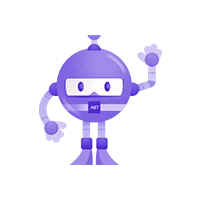 .NET MAUI Development
.NET MAUI Development
 Xamarin Application Development
Xamarin Application Development
 React Native App Development
React Native App Development
 iOS Application Development
iOS Application Development
 Android Application Development
Android Application Development
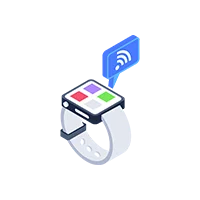 Android Wear App Development
Android Wear App Development
 Ionic Development
Ionic Development
 iBeacon Application Development
iBeacon Application Development
 Universal Windows Platform (UWP)
Universal Windows Platform (UWP)
 Kotlin Application Development
Kotlin Application Development
 Swift Application Development
Swift Application Development
 Flutter Application Development
Flutter Application Development
 PWA Application Development
PWA Application Development
 Offshore Software Development
Offshore Software Development
 Custom Application Development
Custom Application Development
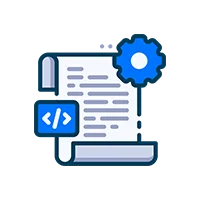 Front-End Development
Front-End Development
 Full Stack Development
Full Stack Development
 AI & Machine Learning
AI & Machine Learning
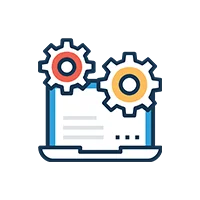 Custom CRM Solutions
Custom CRM Solutions
 Flask Software Development
Flask Software Development
 Electron JS Development
Electron JS Development
 ChatGPT Development
ChatGPT Development
Telemedicine App Development
Build Smart Telemedicine Platform
Beauty & Salon App Solutions
Hire Workato Experts
Workato Consulting & Support
 .NET Application Development
.NET Application Development
 .NET Nuke Development
.NET Nuke Development
 Microsoft Dynamics CRM
Microsoft Dynamics CRM
 Microsoft Small Business Solution
Microsoft Small Business Solution
 VB .NET Development
VB .NET Development
 C# Development
C# Development
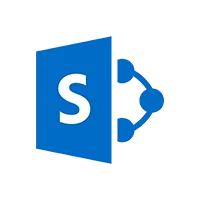 Sharepoint Migration
Sharepoint Migration
 Sharepoint Development
Sharepoint Development
 ASP.NET Core Development
ASP.NET Core Development
 ASP.NET Development
ASP.NET Development
 ASP.NET MVC Development
ASP.NET MVC Development
 Kentico CMS
Kentico CMS
 Umbraco CMS
Umbraco CMS
 AJAX Development
AJAX Development
 Agile Development
Agile Development
 Microsoft Bot
Microsoft Bot
 Microsoft Blazor
Microsoft Blazor
 Microsoft Azure Cognitive
Microsoft Azure Cognitive

 Mean Stack Development
Mean Stack Development
 Vue JS Development
Vue JS Development
 Javascript Development
Javascript Development
 Angular JS Development
Angular JS Development
 Next JS development
Next JS development
 Java Development
Java Development
 Python Development
Python Development
 Django Development
Django Development
 Cherrypy Development
Cherrypy Development
 NodeJS Development
NodeJS Development
 Laravel Development
Laravel Development
 CodeIgniter Development
CodeIgniter Development
 Zend Development
Zend Development
 Ruby on Rails Development
Ruby on Rails Development
 CakePHP Development
CakePHP Development
 PHP Website Development
PHP Website Development
 Symfony Development
Symfony Development
 Drupal Development
Drupal Development
 Joomla Development
Joomla Development
 Wordpress Development
Wordpress Development
 Magento Development
Magento Development
 Magento 2.0 Development
Magento 2.0 Development
 Magento Enterprise
Magento Enterprise
 Shopping Cart Development
Shopping Cart Development
 Prestashop Development
Prestashop Development
 Shopify Development
Shopify Development
 Open Cart Development
Open Cart Development
 WooCommerce Development
WooCommerce Development
 BigCommerce Development
BigCommerce Development
 NopCommerce Development
NopCommerce Development
 Virto Commerce Development
Virto Commerce Development
 AspDotNetStorefront Development
AspDotNetStorefront Development
 RaspBerry Pi
RaspBerry Pi
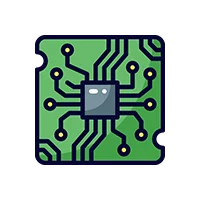 Firmware Software Development
Firmware Software Development
 ESP 32 Software Development
ESP 32 Software Development
 Embedded Development
Embedded Development
 Internet of Things
Internet of Things
 Nordic Development
Nordic Development
 HTML 5
HTML 5
 UI/UX Design
UI/UX Design
 Graphic Design
Graphic Design
 Adobe Photoshop
Adobe Photoshop
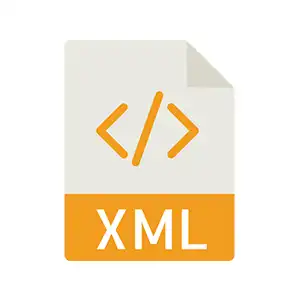 XML Application Development
XML Application Development
 Cloud Computing Solutions
Cloud Computing Solutions
 Azure Cloud App Development
Azure Cloud App Development
 AWS Development
AWS Development
 Google Cloud Development
Google Cloud Development
 SQL Programming Development
SQL Programming Development
 MySQL Development
MySQL Development
 MongoDB Development
MongoDB Development
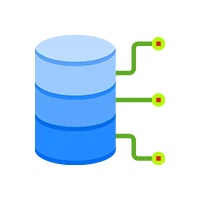 Big Data
Big Data
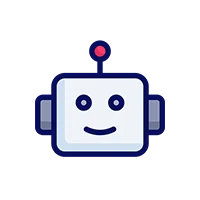 Robotic Process Automation
Robotic Process Automation
 Social Media Marketing
Social Media Marketing
 Search Engine Optimization
Search Engine Optimization
 QA Testing
QA Testing
 Software Testing
Software Testing
 Software Security
Software Security
 Maintenance And Support
Maintenance And Support
 I.T. Consulting Services
I.T. Consulting Services
 Business Intelligence
Business Intelligence
 YII Development
YII Development
 Data Analysis
Data Analysis
 Alexa Skills Development
Alexa Skills Development
 On Demand App for Mobile repairing services
On Demand App for Mobile repairing services
 On Demand App for Car Service Booking
On Demand App for Car Service Booking
 On Demand App for Cleaning Services
On Demand App for Cleaning Services
 On Demand App for Pharmacy
On Demand App for Pharmacy
 On Demand Dedicated Developers
On Demand Dedicated Developers
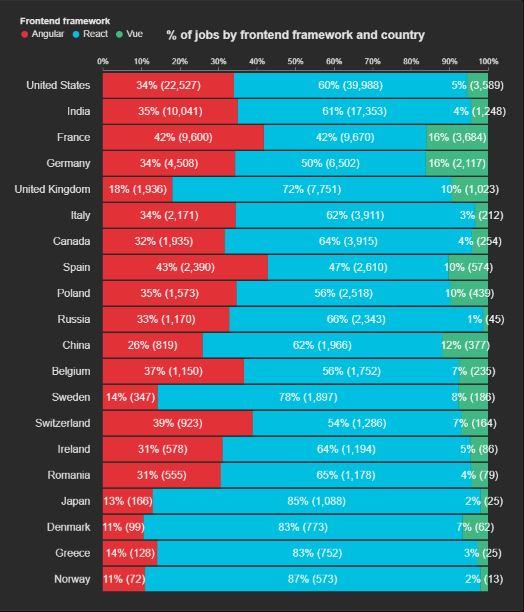
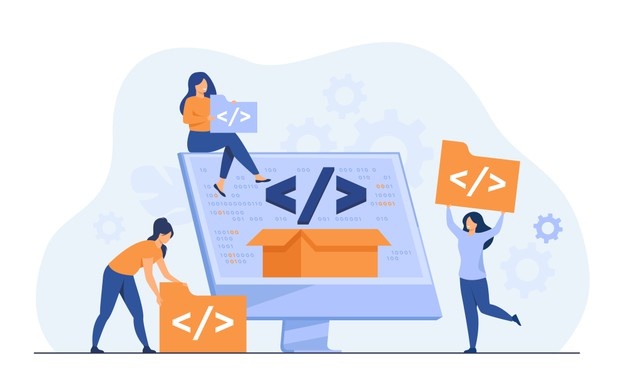






Leave a Reply